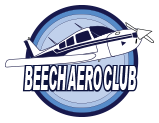Aaron.1138
Level Cruise
Okay I gotta ask the stupid question here....
How to safely do the "rock your wings" maneuver for the Oshkosh arrival?
If I do large aileron movements it would cause a heading change, most of the time when we use Aileron we are intending to make a heading change (coordinated rudder).
Should this be done like the "dutch roll" / "rolling on a heading" maneuver where you use opposite rudder to keep it on a heading ?
https://en.wikipedia.org/wiki/Dutch_roll#Rolling_on_a_heading
https://www.youtube.com/watch?v=derW4-Tly0Y
My thoughts:
This needs to be done while low & slow (90 KIAS).
I realize I have never done this maneuver, and I don't want to accidentally get too much sideslip/skidding, especially while slow.
(Last year I got lucky and got an Instrument Approach into OSH)
I have an IPC with an instructor coming-up next week, guess we will take some time to try this also.
How to safely do the "rock your wings" maneuver for the Oshkosh arrival?
If I do large aileron movements it would cause a heading change, most of the time when we use Aileron we are intending to make a heading change (coordinated rudder).
Should this be done like the "dutch roll" / "rolling on a heading" maneuver where you use opposite rudder to keep it on a heading ?
https://en.wikipedia.org/wiki/Dutch_roll#Rolling_on_a_heading
https://www.youtube.com/watch?v=derW4-Tly0Y
My thoughts:
This needs to be done while low & slow (90 KIAS).
I realize I have never done this maneuver, and I don't want to accidentally get too much sideslip/skidding, especially while slow.
(Last year I got lucky and got an Instrument Approach into OSH)
I have an IPC with an instructor coming-up next week, guess we will take some time to try this also.
